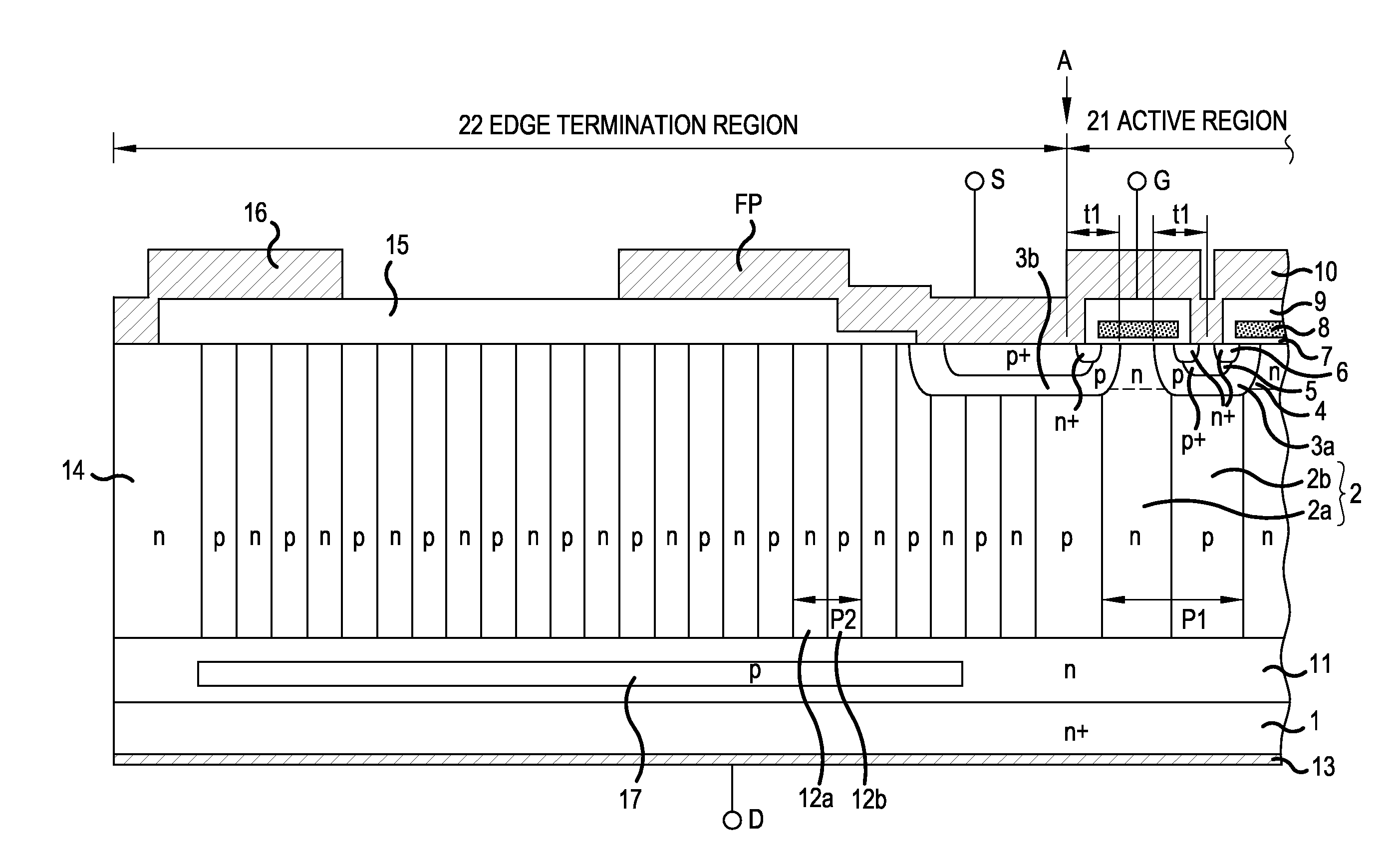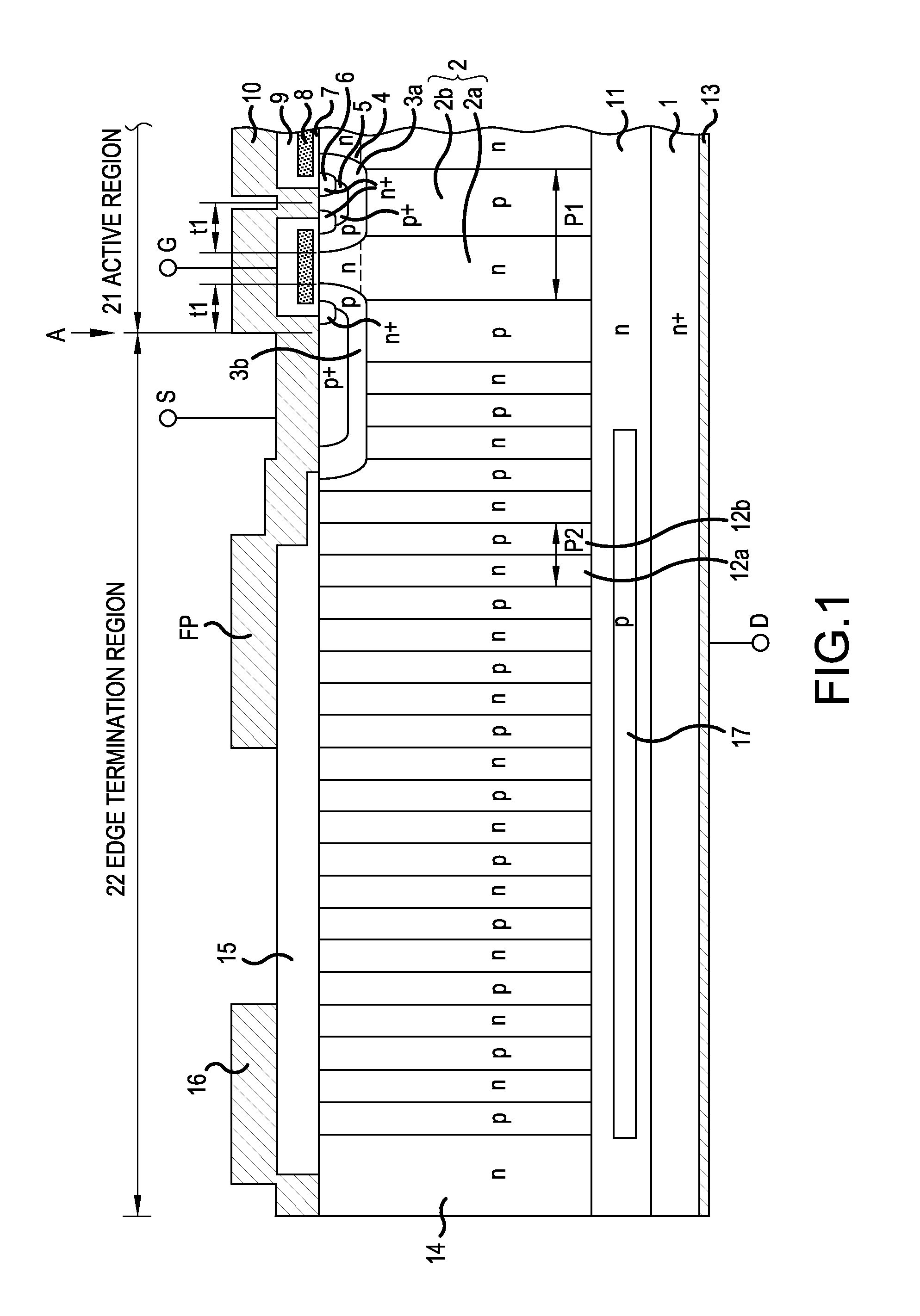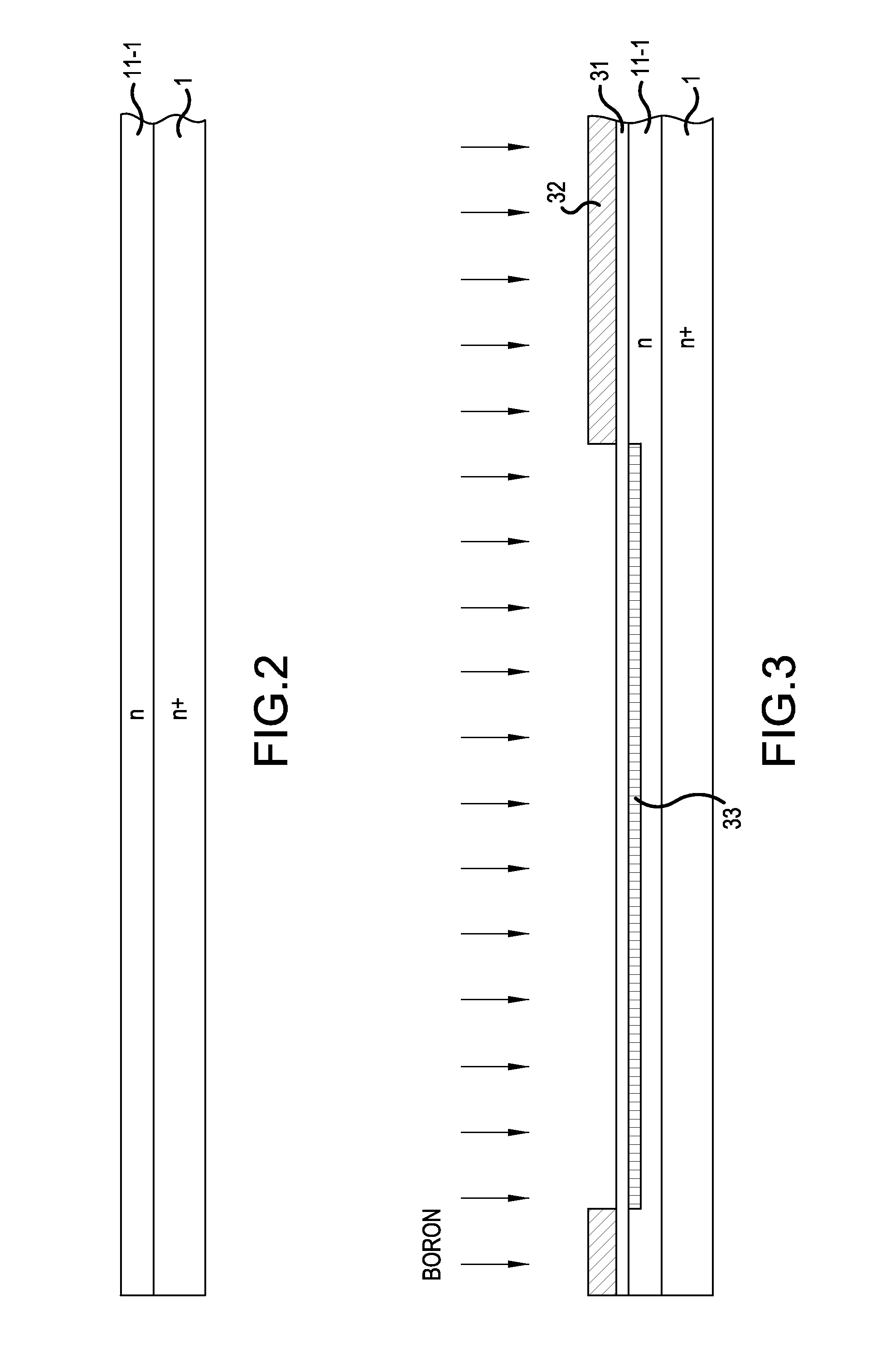Semiconductor device
a technology of semiconductors and devices, applied in the direction of semiconductor devices, basic electric elements, electrical equipment, etc., can solve the problems of device breakdown and loss, and achieve the effect of improving the ability to reverse the effect of recovery
- Summary
- Abstract
- Description
- Claims
- Application Information
AI Technical Summary
Benefits of technology
Problems solved by technology
Method used
Image
Examples
embodiment 1
[0042]As for the structure of a semiconductor device according to Embodiment 1, an n-channel vertical MOSFET with a planar gate structure will be described by way of example. FIG. 1 is a cross sectional view of the semiconductor device according to Embodiment 1. The semiconductor device according to Embodiment 1 shown in FIG. 1 is a superjunction MOSFET which is formed so that n-buffer layer (first conductivity-type layer) 11 and drain drift portion (vertical drift portion) 2 with a first parallel pn structure are laminated sequentially on low resistivity n+ drain layer (low-resistivity layer) 1 with which drain electrode 13 on the back side of a substrate makes ohmic contact. The substrate is an epitaxial substrate which will be described later.
[0043]P-base regions 3a with high impurity concentration serving as active region 21 are provided selectively on the front side (an opposite side to the n-buffer layer 11 side) surface layer of drain drift portion 2. P+ contact region 5 with...
embodiment 2
[0065]The structure of a superjunction semiconductor device according to Embodiment 2 will be described. FIG. 7 is a cross sectional view showing the structure of the semiconductor device according to Embodiment 2. The superjunction semiconductor device according to Embodiment 2 is different from the superjunction semiconductor device according to Embodiment 1 in the following two points. The first different point is that n-type bulk region 42 consecutive to the first parallel pn structure is provided in place of the second parallel pn structure and p-type RESURF region 43 is provided in a front side surface layer of n-type bulk region 42. The second different point is that an outer end portion of p-buffer layer 41 is extended up to the outer periphery (side surface) of edge termination region 22.
[0066]N-type bulk region 42 is a region between the first parallel pn structure provided to extend from active region 21 to edge termination region 22, and n-type channel stopper region 14 ...
embodiment 3
[0071]The structure of a superjunction semiconductor device according to Embodiment 3 will be described. FIG. 12 is a cross sectional view showing the structure of the semiconductor device according to Embodiment 3. The superjunction semiconductor device according to Embodiment 3 is different from the superjunction semiconductor device according to Embodiment 1 in the following two points. The first different point is that the depth of a parallel pn structure in device peripheral portion 22 becomes shallower as it goes toward the outer periphery. The second different point is that the parallel pn structure in edge termination region 22 is separated from the p-buffer layer by n-type region (first conductivity-type region) 64 formed in a region where the parallel pn structure in edge termination region 22 becomes shallower.
[0072]A third parallel pn structure is provided in edge termination region 22 so as to be consecutive to the second parallel pn structure and outside the second par...
PUM
 Login to View More
Login to View More Abstract
Description
Claims
Application Information
 Login to View More
Login to View More - R&D
- Intellectual Property
- Life Sciences
- Materials
- Tech Scout
- Unparalleled Data Quality
- Higher Quality Content
- 60% Fewer Hallucinations
Browse by: Latest US Patents, China's latest patents, Technical Efficacy Thesaurus, Application Domain, Technology Topic, Popular Technical Reports.
© 2025 PatSnap. All rights reserved.Legal|Privacy policy|Modern Slavery Act Transparency Statement|Sitemap|About US| Contact US: help@patsnap.com



